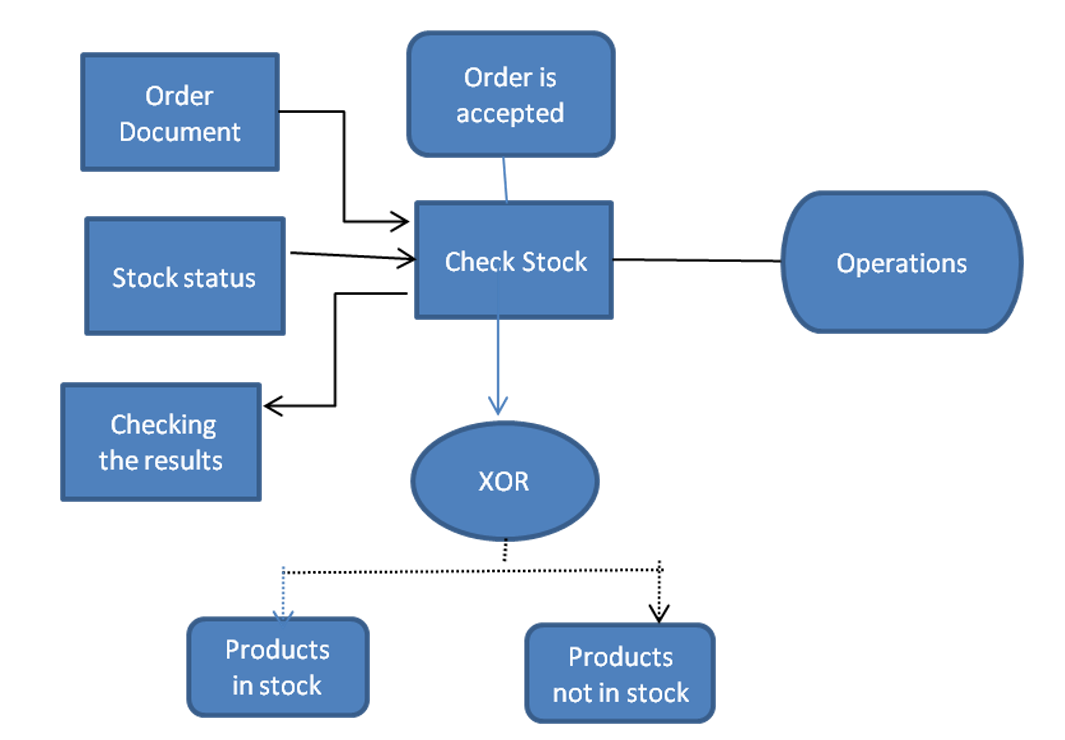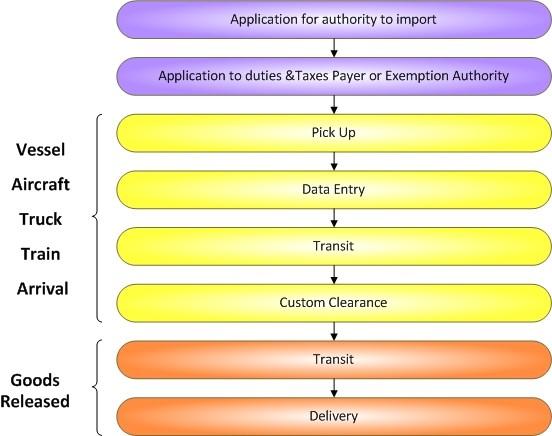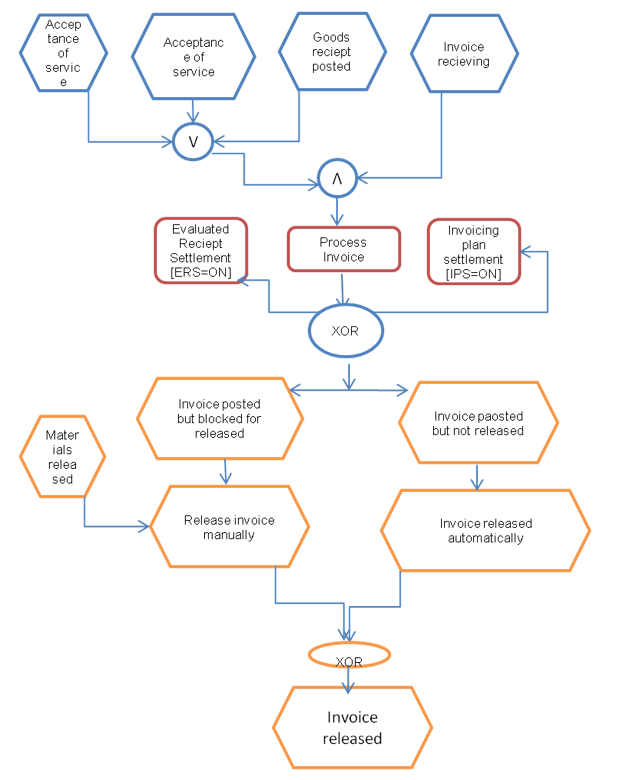Summary of the article
The case study, “Business Process Re-engineering in Healthcare Management” cites the increasing complexity within the health care sector, as evidenced by the need to provide specialised medical care and therapies in health care facilities. In a bid to provide such health care services, the need for effective organisation in the various service units to deliver quality health care cannot be ignored. Bertolini et al. (2011) emphasise the importance of applying business process re-engineering in the health care sector to foster operational efficiency in surgical wards. The authors argue that health care sectors around the world have been concerned with delivering quality health care services over the years, as evidenced by the adoption of different aspects of quality management (Bertolini et al. 2011).
However, empirical studies conducted in some countries such as Singapore and the United States show the existence of a gap with regarding the level of customer satisfaction, and thus the implemented quality management practices.
The article cites many barriers to the implementation of quality management. The lack of staff commitment is one of the major barriers to the successful implementation of quality management. Secondly, most health care administrators adopt a short-term outlook in their change implementation processes. The implementation of quality management is also hindered by resistance amongst nurses, doctors, and other hospital staff members due to the lack of motivation. Furthermore, the article argues that most health care providers do not understand the customers’ requirements, which leads to poor implementation of the quality management practices.
The article stresses the application of simulation models in the health care sector due to their effectiveness in solving problems depending on the prevailing situation. The application of simulation models is being applied extensively in promoting operational efficiency. For example, the simulation models support the managers’ decision-making processes, hence determining the optimal resource allocation and management of patient flow. Other areas in which the simulation modelling is applied in the health care sector include health care system design, epidemiology, medical decision-making, and health care systems operation (Bertolini et al. 2011).
The article upholds the significance of implementing business process re-engineering [BPR] and quality management in ward management processes. Additionally, the article appreciates the existence of challenges in health care organisations such as poor communication across the different departments. The article mainly focuses on the application of simulation model in improving quality service in the neurosurgery ward using the event-driven process chains [EPCs].
The article further illustrates the application of the EPCs in the management of organisational activities. This goal is achieved by understanding the necessary interdependencies in the execution of a particular activity. In addition to the above aspects, the article underscores the importance of applying the simulation process to improve the effectiveness and efficiency in executing certain tasks. According to the article, the application of the simulation process is achieved through the integration of the As-Is approach. Bertolini et al. (2011, p.53) argue that the As-Is process enables managers to gather information related to ‘throughput time for processes with certain resources, process delays, identification of bottlenecks, use of resources, and number of processes completed in a certain amount of time’.
The article focuses on the application the Delphi technique in improving quality service delivery in the wards. Using the Delphi approach, the article argues that it is possible for health care institutions to identify the areas for improvement, hence promoting the level of customer satisfaction. The effectiveness of the Delphi methodology in fostering customer satisfaction arises from the fact that it enables an organisation to improve its resource utilisation.
Furthermore, the Delphi technique plays a fundamental role in promoting the establishment of an enabling environment for working. This goal is achieved by entrenching communication across the various internal organisational stakeholders (Bertolini et al. 2011). Therefore, one can argue that the Delphi technique is important in resolving challenges that might be encountered in undertaking certain business processes due to the inherent communicative process.
Despite the effectiveness of the Delphi technique in developing a collaborative approach to undertaking business processes, the article cites many bottlenecks associated with the application of the approach toward management. The article emphasises the application of ‘what-if’ concept, which is based on the development of the possible scenarios that might arise in undertaking a particular business process. Proposal for the what-if scenarios is essential in analysing the different outcomes that might be encountered. Subsequently, organisational managers are in a position to modify the necessary parameters to increase the chances of attaining the desired outcomes (Glykas 2013).
Significance of Event-driven Process Chain charts in understanding the dynamics of a business process
According to Winter et al. (2011, p. 49), ‘business process models focus on a dynamic view of information processing’. The business process models emphasise the importance of establishing the connection amongst the various activities based on their logical and chronological order. Additionally, the business process model focuses on the roles and departments or units that perform certain activities. One of the business process models includes the Event-driven Process Chain (EPC). According to Winter et al. (2011, p.49), the EPC entails a series of events ‘that trigger business functions, which are themselves the result of other functions apart from the initial events triggering the whole process’. The events stimulate a function and hence the necessary subsequent events.
The EPC is an effective informal method of representing processes and domain concepts. Using the EPCs improves the managements’ efficiency due to the application of the control view associated with the business processes. Weske (2012) proposes that the EPCs enable organisational managers to integrate diverse views in undertaking a certain task. This goal is achieved by laying out the workflows such as the sequence of the decision-making process, events, and functions. The EPCs are comprised of some building blocks, which include the event, connectors, control flow edges, and functions. The functions align with the activities that are required to be executed.
The events describe the prevailing situation before or after the function are undertaken. Bertolini et al. (2011, p.46) affirm that an ‘event may correspond to the post-condition of one function and act as a pre-condition of another function’. Conversely, the connectors are used in establishing the logical link between the various activities. Using the logical connectors [depicted by Λ (and), V (Or), and X (Exclusive)], the EPCs aid in specifying the process logics and the flow of control. Moreover, one can argue that the EPCs are vital in developing a broad view in the pursuit for quality service delivery.

The EPCs enable organisations to adopt a business perspective in executing different processes. Thus, the management administrators are concerned with the outcome. For example, upon receiving an order from the customer, a series of events is triggered. These events include assessing the order document and the stock status. These events constitute the critical input data. Assuming that the organisation’s operation department undertakes the function, the outcomes are documented in the check results upon its completion. The flow chart below illustrates the events and functions associated with such an order.
The EPCs enable organisational managers to understand the type of join behaviours between various business units. This aspect arises from the fact that humans are involved extensively in interpreting the EPCs. Thus, it is possible to establish the logical connection amongst the various events necessary for completing a particular task, hence attaining the desired outcome. For example, the EPC enable organisational managers to understand the activities that can be undertaken concurrently (Winter et al. 2011).
From the above analysis, one can argue that the EPCs enable organisational managers to appreciate the interdependence amongst various events in attaining the desired outcome. By understanding the inherent interdependency, organisational managers are in a position to appreciate the importance of establishing interdependencies amongst the various units in attaining the desired outcome (Salvendy & Karwowski 2010). Additionally, the EPCs add dynamic properties of the various process steps, viz. the events and logical connectors, hence providing organisational managers with an opportunity to establish the necessary alternatives.
EPC chart for customs clearance at Dubai Customs
The UAE government has established the Dubai Customs as one of its departments to enhance sustainable development by transforming the country’s image into a leading tourism destination. The Dubai Customs intends to achieve this goal by fostering the seamless movement of legitimate trade, hence leveraging on the country’s social and economic development. The Dubai Customs is focused on fostering the country’s prosperity through fast and safe trade.
The Dubai Customs is committed to delivering a high level of satisfaction amongst its clients. In a bid to achieve this goal, the Dubai Customs has organised its operations into several business processes. One of the fundamental processes entails the customs clearance. In executing this process, the Dubai Customs is concerned with compliance to the international customs standards, such as the Unified Customs Law of the GCC (Government of Dubai 2015). To improve customs clearance, the Dubai Customs has integrated several activities that are undertaken in the clearance process as outlined in the chart below.

From the EPC chart above, it is evident that the Dubai Customs has appreciated the interdependence amongst the various activities in the customs clearance process. The chart shows the existence of linear dependency amongst the various activities in the clearance of goods. This form of dependency might lead to the consumption of a substantial amount of time, hence limiting the customs’ effectiveness in promoting fast trade. Additionally, Derguech, Gao, and Bhiri (2012, p. 119) argue that regulations in customs clearance are providing different opportunities to ‘adapt their processes to local needs and preferences’. To improve its effectiveness, it is imperative for the Dubai Customs to undertake improvement on its EPCs.
One of the approaches that the organisation should take into account entails the business process reengineering. The BPR should focus on improving its EPCs by incorporating the configuration process model. According to Aalst et al. (2009), the configuration process models are focused on entrenching the control-flow perspective. Under the configuration process model, organisations are required to understand the scope involved in undertaking the various activities.
This aspect is achieved by evaluating the scenarios that might arise in the process of executing different activities. The customs clearance process is comprised of a series of activities. Executing the activities required the responsible individuals to take into account the time impact. Aalst et al. (2009) argues that a particular decision might have short-term or long-term effects. Therefore, the importance of understanding the correlation between time and the scope of activities in the customs clearance process cannot be ignored.

By applying the Configurable EPCs [C-EPCs], the Dubai Customs will be in a position to improve its customs clearance process by identifying the choices that can be made during and before runtime. Bider (2011) contends that the C-EPCs enable organisational managers to differentiate between the mandatory elements and those that can be omitted. One of the customs clearance processes that the Dubai Customs deals with relates to invoicing. For example, effective invoicing is critical in paying the customs tax. To improve its invoicing process, the Dubai Customs should consider entrenching the C-EPCs in the invoice verification process. The model will enable the department to identify configurable activities that may be skipped conditionally [OPT], included [ON], or skipped [OFF]. Applying the C-EPCs will enable the Dubai Customs to configure the invoicing process optimally.
The chart above illustrates the nature of the activities involved in the invoicing process. By considering the above EPC, the Dubai Customs will be in a position to undertake effective resource allocation. Furthermore, understanding the interdependencies will improve the efficiency of the invoicing process by ensuring that some activities are undertaken concurrently.
Apart from improving the invoicing process using the configured EPC, the Dubai Customs can also consider integrating the Delphi approach. Under the Delphi technique, the Dubai Customs will be in a position to improve the efficiency of its customs clearance process. This assertion arises from the view that the Customs department will be in a position to gather the relevant data from various experts within the unit.
Therefore, the technique encourages the establishment of a collaborative approach to executing business processes. Hsu and Sandford (2007, p.3) argue that the ‘Delphi technique is based on the concepts of what could or should be’. Subsequently, the Delphi technique is based on effective communication to achieve convergence. According to Hsu and Sandford (2007), the Delphi approach is very effective in improving effectiveness and efficiency regarding resource utilisation. One of the resources that the technique optimises entails the human capital.
The effectiveness of the collaborative mechanism of the Delphi technique arises from the fact that it does not reveal the source of information. Hsu and Sandford (2007) argue that the aspect of confidentiality is critical in eliminating the likelihood of a particular business process being dominated by a few parties. Thus, a particular entity is in a position to develop a range of alternatives besides making decisions based on consensus. Furthermore, integrating the technique will play a fundamental role in exposing the underlying assumptions in the customs clearance process. Thus, the likelihood of optimising resource utilisation will be improved substantially.
Bottlenecks in the business process
Despite the Dubai Customs’ commitment to improving its efficiency in its customs clearance process using the Delphi technique, it is imperative for the department to appreciate the shortcomings associated with the specific business process. One of the fundamental challenges encountered in applying the Delphi approach as a business process model is time consumption. Hsu and Sandford (2007, p.5) argue that the Delphi technique ‘is iterative and sequential, and thus the necessity of taking a large block of time to complete a Delphi process successfully is inescapable’.
Even though the iteration associated with the Delphi technique aids in the improvement of the outcome, the amount of time consumed to complete the process successfully is substantial. Consequently, the process becomes tiresome. The time-consuming nature of the Delphi technique is evident in the case study outlined in the article. Bertolini et al. (2011) argue that the application of the technique in the ward management might lead to extensive hospitalisation due to the long waiting time to access treatment.
The Delphi technique is based on the concept of collaboration. However, developing such collaboration is challenging due to the poor distribution of knowledge and experience. Hsu and Sandford (2007) affirm that the knowledge possessed by employees within the customs department might be distributed unevenly. Thus, some employees might possess more in-depth knowledge of specific customs processes as compared to others.
Another major bottleneck associated with the technique is that not all the stakeholders involved in the customs clearance process might be responsive to the questionnaires that might be developed to identify gaps in the process. The low response rate might be triggered by the lack of motivation amongst the workforce. Hsu and Sandford (2007) argue that the application of the Delphi technique is based on effective collaboration. Thus, organisational managers must undertake an active role in the implementation of the Delphi technique to improve the level of motivation.
Conclusion and recommendations
Delivering customer value is one of the benchmarks that organisations should consider in assessing their likelihood of attaining sustainable development. Therefore, amongst the issues that organisational managers should focus on is quality. The article argues that organisations in the health care sector are concerned with the quality of their services. However, gaps exist in the delivery of the quality services due to poor quality management practices. Thus, it is vital for organisations to undertake business process re-engineering to attain the desired outcome. Organisations can adopt different approaches to the implementation of the BPR.
One of the most effective approaches entails the integration of the event-driven process chains. Using the EPCs in executing the various internal activities enables a firm to appreciate the importance of developing a collaborative working environment. This assertion arises from the view that the EPCs are based on a high level of interdependency amongst different activities. Moreover, integrating the EPCs enables an organisation to improve its resource utilisation. Subsequently, the likelihood of attaining a high level of efficiency is improved considerably.
Organisations can improve the effectiveness of their EPCs by adjusting the organisation of the activities, for example by applying the configured EPCs. Moreover, the article underscores the importance of entrenching the Delphi technique to promote collaboration across various departments. This goal is achieved through the integration of effective communication. Organisational managers should improve their quality management processes continuously by undertaking business process re-engineering. This approach will improve operational efficiency besides attaining the desired outcomes.
Reference List
Aalst, W, Dreiling, A, Rosemann, M & Vullers, M 2009, Configurable process models as a basis for reference modelling; position paper. Web.
Bertolini, M , Beavilacqua, M, Ciarapica, F & Giacchetta, G 2011, ‘Business process reengineering in health care management, a case study’, Business Process Management Journal, vol. 17, no. 1, pp. 42-66. Web.
Bider, I 2011, Enterprise, business process, and information system, Springer, New York. Web.
Derguech, W, Gao, F & Bhiri, S 2012, ‘Configurable process models for logistics; case study for customs clearance’, Business Information Processing, vol. 100, no. 3, pp. 119-130. Web.
Glykas, M 2013, Business process management; theory and applications, Springer, New York. Web.
Government of Dubai: Customs clearance. 2015. Web.
Hsu, C & Sandford, B 2007, ‘The Delphi technique, making sense of consensus’, Practical Assessment, Research & Evaluation, vol. 12, no. 10, pp. 1-8. Web.
Salvendy, G & Karwowski, W 2010, Introduction to service engineering, John Wiley & Sons, Mason. Web.
Weske, M 2012, Business process management; concepts, languages, architectures, Springer, Chicago. Web.
Winter, A, Haux, R, Ammenwerth, E, Brigl, B, Hellrung, N & Jahn, F 2011, Health information systems; architectures and strategies, Springer, London. Web.